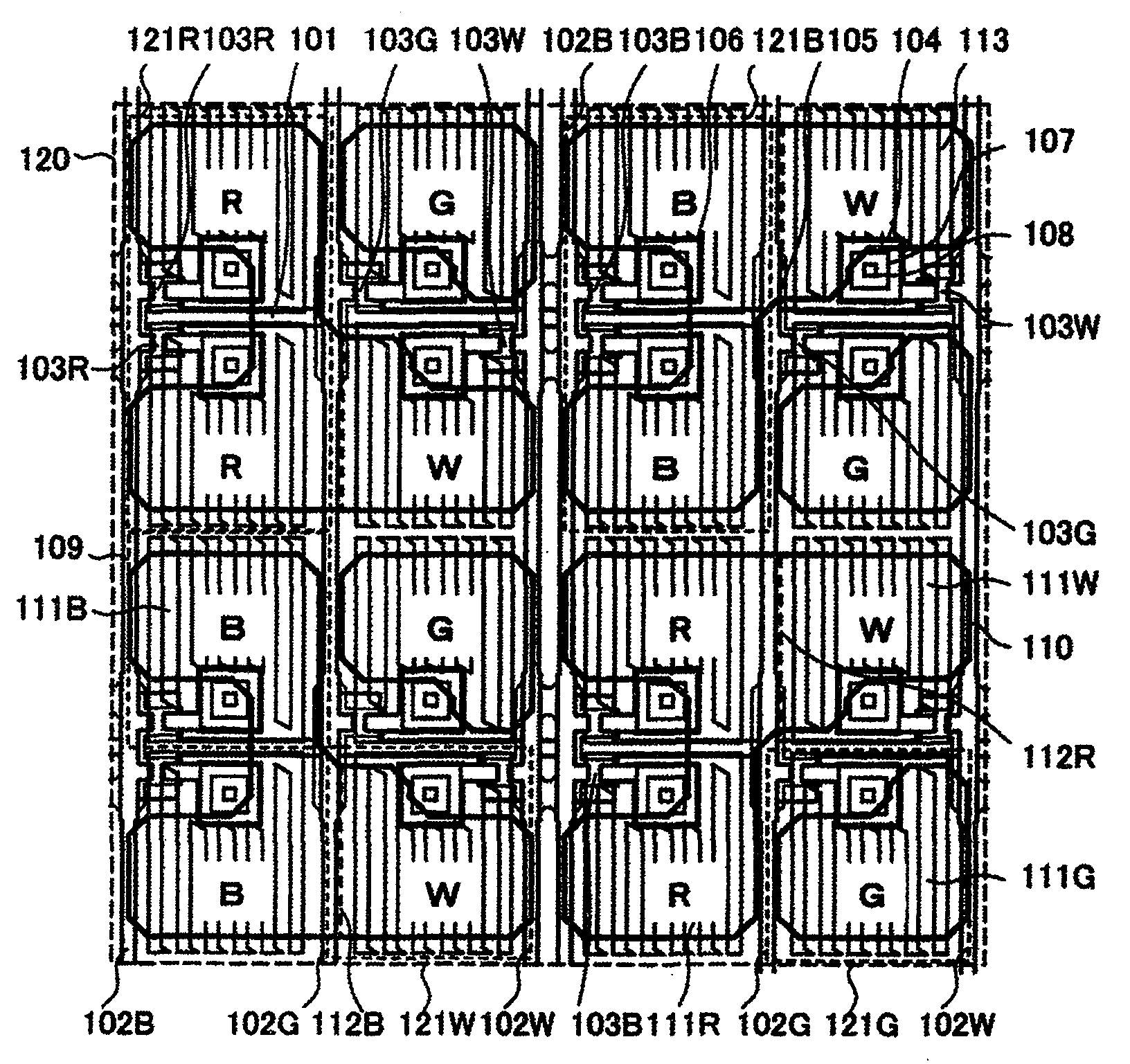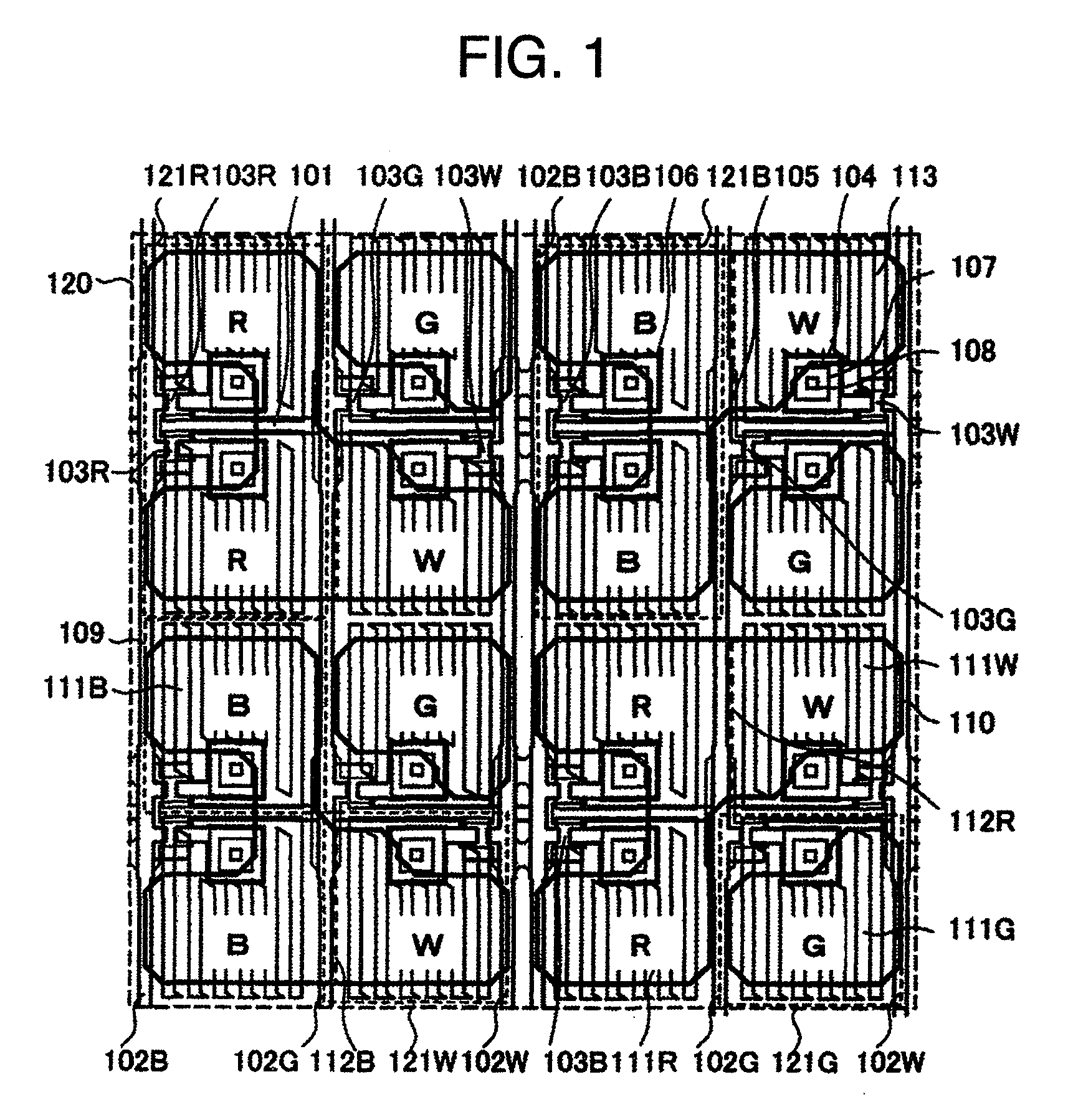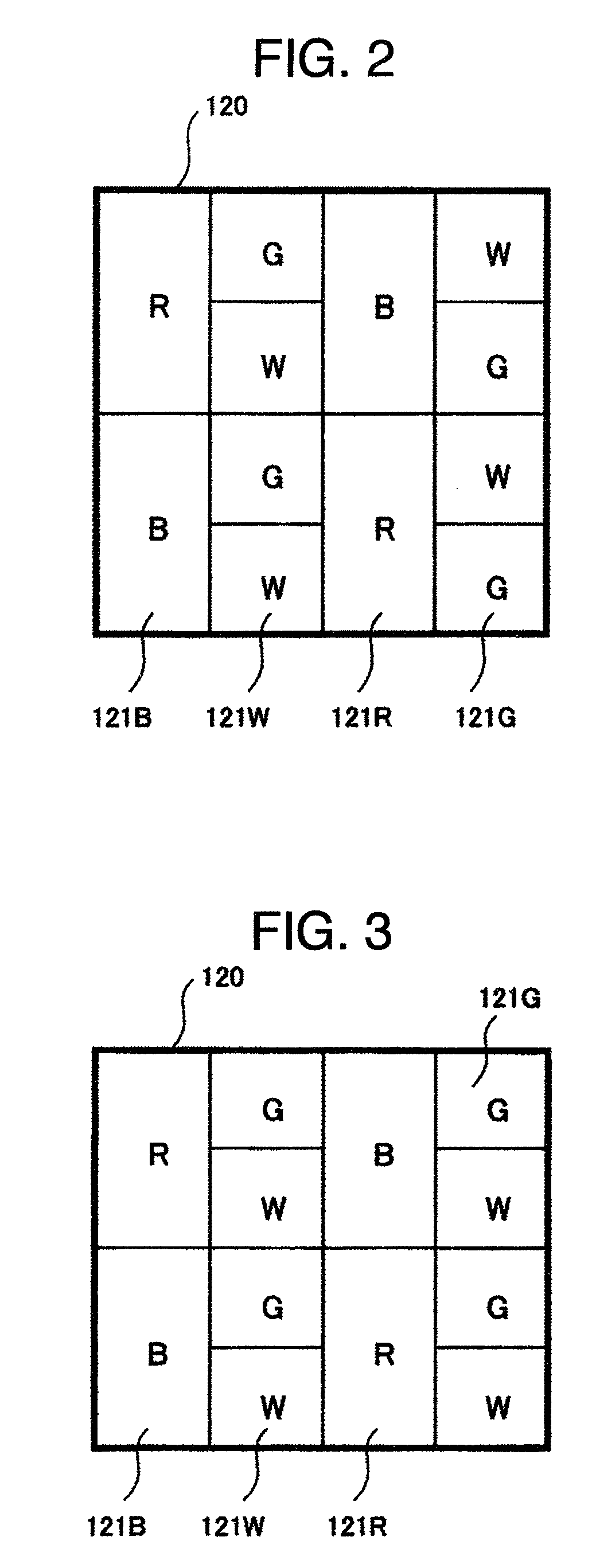Color display, liquid crystal display, and translucent liquid crystal display
a liquid crystal display and color display technology, applied in the field of color display devices, can solve the problems of increasing the number of subpixels, increasing the number of electrical wiring lines associated therewith, and reducing the image resolution, and achieve the effect of suppressing the image resolution reduction
- Summary
- Abstract
- Description
- Claims
- Application Information
AI Technical Summary
Benefits of technology
Problems solved by technology
Method used
Image
Examples
embodiment 1
[0032]A configuration of this embodiment will be described by use of FIG. 1. FIG. 1 is an enlarged plan view of part of a display device of this embodiment, including a plurality of picture elements or “pixels” in a display area with a matrix array of pixels each made up of sub-pixels being provided in units of colors. The display device of this embodiment is a liquid crystal display (LCD) device, which is arranged so that a liquid crystal (LC) layer is filled between a first substrate on which a plurality of thin-film transistors (TFTs) provided on a per-subpixel basis and wiring lines are disposed in a matrix form and a second substrate with color filters and a black matrix being disposed thereon. The LCD device is of the type using the so-called active matrix drive technique. Optical films, such as polarization plates, are bonded onto specified surfaces of the first and second substrates, which surfaces are on the opposite side to the LC layer. The display device of this embodime...
embodiment 2
[0051]Regarding peripheral circuit design in a case where the unit subpixel configuration is not employed, this embodiment provides a solution to problems occurrable in the pixel layouts shown in FIGS. 2 and 3 when failing to use the unit subpixel arrangement and thus resulting in the subpixels being different in size on a per-color basis, which solution is different from that of the embodiment 1. One problem occurring in case the subpixels are different in size on a per-color basis is that the optimum common voltage becomes different in its potential value due to a difference of feed-through voltage on a per-subpixel basis, which can occur due to differences of each subpixel's electrical characteristics (e.g., retained capacitance, parasitic capacitance or else). Size-different subpixels will be referred to as a first kind of subpixel and second kind of subpixel, respectively. A method for supplying color-tone or gradation voltages which are optimized to the first kind of subpixel ...
embodiment 3
(RGBC Layout)
[0059]In this embodiment, a description will be given of another configuration of color filters in the subpixel layouts shown in FIGS. 2 and 3. While the embodiments shown in FIGS. 2-3 are each arranged to have white (W) subpixels in addition to the subpixels of three primary colors, i.e., red (R), green (G) and blue (B), this arrangement may be modified so that the green (G) and white (W) subpixels which are higher in visual sensitivity than red (R) and blue (B) subpixels are replaced by subpixels of blue-blended green (CG) and yellow-blended green (YG) which are similarly high in visual sensitivity to thereby provide a configuration of four primary colors as shown in FIGS. 8 and 9. An advantage of this arrangement lies in its ability to widen the range of color reproduction when compared to the case of using only three primary colors, i.e., red (R), green (G) and blue (B). Very importantly, the advantage as to expandability of the color reproduction range is obtainabl...
PUM
 Login to View More
Login to View More Abstract
Description
Claims
Application Information
 Login to View More
Login to View More - R&D
- Intellectual Property
- Life Sciences
- Materials
- Tech Scout
- Unparalleled Data Quality
- Higher Quality Content
- 60% Fewer Hallucinations
Browse by: Latest US Patents, China's latest patents, Technical Efficacy Thesaurus, Application Domain, Technology Topic, Popular Technical Reports.
© 2025 PatSnap. All rights reserved.Legal|Privacy policy|Modern Slavery Act Transparency Statement|Sitemap|About US| Contact US: help@patsnap.com



